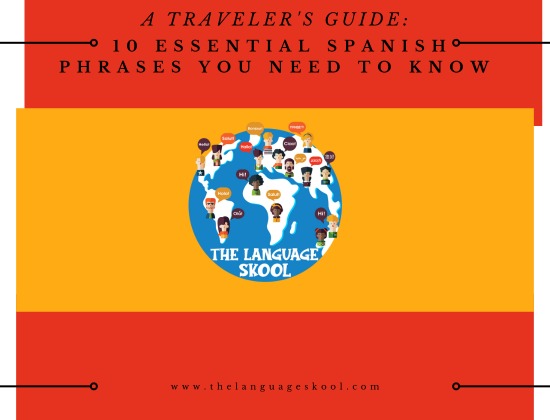
Top 20 Everyday Spanish Phrases for Real-Life Conversations
.
Learning Spanish doesn’t have to mean memorizing endless grammar rules or textbook dialogues. If you want to sound more natural and confident in real-life situations, you need phrases that native speakers use every day. Whether you’re traveling, making friends, or practicing your speaking skills, these expressions will help you blend in and connect with ease.
Here’s a list of 20 everyday Spanish phrases that can instantly make your conversations smoother and more authentic:
¿Qué tal?
A casual and friendly way to ask "How’s it going?" or "What’s up?" It's commonly used between friends and even strangers in informal settings.
Example
Hola, ¿qué tal?
Bien, ¿y tú?
Buenos días / Buenas tardes / Buenas noches
These are your go-to greetings depending on the time of day. Use Buenos días in the morning, Buenas tardes in the afternoon, and Buenas noches for evening or nighttime.
Pro tip: In very casual settings, you might hear just Buenas.
Mucho gusto
This phrase means "Nice to meet you" and is typically used when you're introduced to someone new.
A natural response: El gusto es mío (The pleasure is mine)
¿Cómo te llamas?
Ask someone’s name with this phrase, which translates to "What’s your name?"
To reply: Me llamo María (My name is María)
¿De dónde eres?
Want to know where someone is from? This question is a great way to start a conversation and get to know someone.
Follow-up: ¿Y tú? (And you?)
¿Hablas inglés?
If you’re stuck or unsure in a conversation, this phrase can be a lifesaver. It simply means "Do you speak English?"
Alternative: ¿Puedes hablar más despacio? (Can you speak more slowly?)
Por favor\ Gracias\ De nada
These three polite expressions—please, thank you, and you’re welcome—are essential in all interactions. Simple, respectful, and always appreciated.
¡No entiendo!
If you don’t understand something, this phrase is your go-to. It means "I don’t understand" and can be used in both formal and informal settings.
¿Dónde está el baño?
If you're traveling or out and about, knowing how to ask "Where is the bathroom?" is non-negotiable.
¿Cuánto cuesta?
Shopping in Spanish-speaking countries? This means "How much does it cost?" and is useful in stores, markets, or even taxis.
La cuenta, por favor
Use this after finishing a meal at a restaurant to ask for the bill. You can also ask, ¿Podemos dividir la cuenta? to split it.
Está delicioso
If the food is great, let someone know by saying, "It’s delicious." Perfect for complementing a meal at someone’s home or in a restaurant.
¡Ayuda!
This is the word for "Help!" Use it in emergencies or situations where immediate assistance is needed.
Less urgent: ¿Puedes ayudarme? (Can you help me?)
¿A qué hora...?
Use this phrase to ask what time something happens. For example, ¿A qué hora llega el tren? (What time does the train arrive?)
Tengo hambre / Tengo sed
These are practical expressions meaning "I’m hungry" and "I’m thirsty." Ideal when you’re out with friends or family.
Lo siento
When you need to say "I’m sorry," this phrase shows genuine politeness and regret. It can be used for both minor and serious situations.
¿Qué significa...?
If you're learning Spanish and come across an unfamiliar word, ask "What does ... mean?" It’s a great way to keep the conversation going while learning.
Example: ¿Qué significa ‘genial’?
Hasta luego / Nos vemos
Both mean "See you later" and are perfect for ending casual conversations on a friendly note.
Final Thoughts
Knowing a few powerful phrases can completely transform your confidence when speaking Spanish. These expressions aren't just about grammar—they’re about connecting, understanding, and being understood. Practice using a few every day and soon they’ll become second nature.
Ready to take your Spanish conversations to the next level? Start by using these in real-life situations—you’ll be surprised how quickly your skills grow when you speak like a native.












